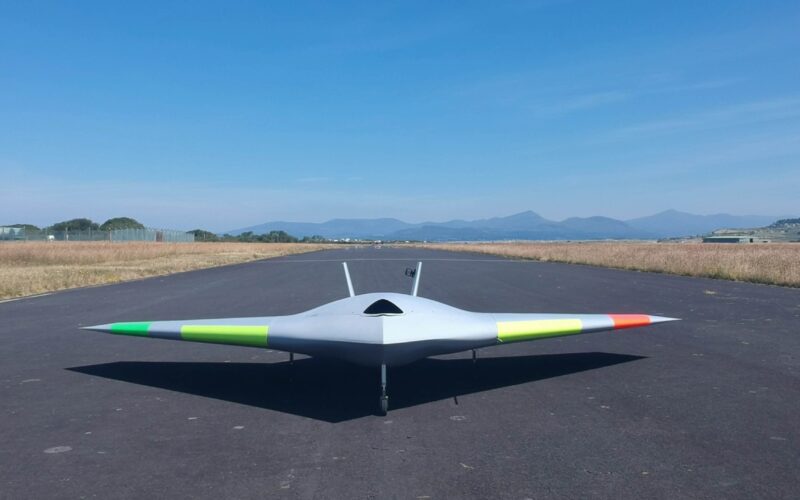MAGMA, a technology demonstrator developed by BAE Systems in partnership with the University of Manchester, successfully carried out a series of flight tests. Once airborne, this aircraft relies solely on blown air to maneuver.
The tests were carried out from Llanbedr aerodrome, about 100 kilometers southwest of Liverpool, United Kingdom. For now, the unmanned aerial vehicle (UAV) still relies on a flap system to take off and land, but once in the air, it maneuvers using air drawn from its engine, expelled from several exhausts over its wings, at different speeds. During the tests, the 2-meter wide UAV reached a top speed of 150km/h.
The first technology tested, called Wing Circulation Control, manages the roll axis by blowing the engine air through the trailing edge, while the second one, Fluidic Thrust Vectoring, uses air jets inside the nozzle to deflect the exhaust gases and control the pitch.
By removing the need for moving surfaces, the two technologies would allow for lighter aircraft, quicker and cheaper to assemble and maintain, according to BAE Systems. “They could also improve an aircraft’s stealth as they reduce the number of gaps and edges that currently make aircraft more observable on radar,” and thus could be applied to future military aircraft. “Other technologies to improve the aircraft performance are being explored in collaboration with NATO Science and Technology Organisation,” concludes the manufacturer.
In 2010, BAE Systems had already presented a similar aircraft, called the Demon, as part of its Flapless Air Vehicle Integrated Industrial Research (FLAVIIR). At that time, the company partnered with Cranfield University. Clyde Warsop, Engineering Fellow at BAE Systems, explained to AeroTime the progress achieved since then:
“While not a direct continuation of the FLAVIIR/DEMON project – MAGMA has demonstrated further developments of the technologies that were originally developed within FLAVIIR”.
“The main advances since FLAVIIR/DEMON have been the developments that allow the use of supersonic blowing jets for greater efficiency and effectiveness (DEMON used subsonic blowing jets) and the demonstration of extended periods of ‘fluidic flight’ where the aircraft was solely controlled (with reversionary conventional control surfaces fully locked out) using a combination of Circulation Control and fluidic thrust vectoring that were fully integrated into the aircraft’s main propulsion engine”.
– Clyde Warsop, Engineering Fellow at BAE Systems

